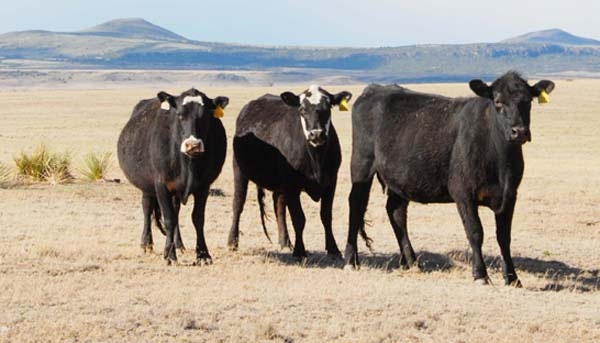A look at historical weather patterns reveals a sobering trend – the decade of the 2010s is shaping up to be like the 1950s.

If there’s any advice that succinctly addresses the current weather situation facing many cattlemen, it’s this: “Cinch up. The ride ain’t near over yet.”
That, in cowboy lingo, is one of the conclusions you can draw after listening to Ted McCollum, Texas AgriLife Extension beef specialist in Amarillo, walk through some historic weather pattern data. Just be warned – it’s no trip through the tulips.
Weather in the interior U.S. – specifically defined as if it rains or not – is largely influenced by water temperatures in both the Pacific and North Atlantic, he says. Looking at data provided by the National Oceanographic and Atmospheric Administration, he points out that in the 1950s, we had a very cool Pacific Ocean and a very warm Atlantic.
He says the current data suggests we again have a very cool Pacific Ocean and a very warm Atlantic Ocean. “The conditions we have right now with the Atlantic and Pacific are the same conditions we had in the 1950s as far as temperatures go. And the conditions that don’t bode well for North America are when we have a warm Atlantic and a cool Pacific.”
Looking at the charts, he says it takes about 30-35 years for Atlantic seawater temperatures to complete a cycle. “About 1928-29, it warmed up and stayed warm for 30 years. Then it cooled off from about 1958 or ’59 until 1996.”
So, if the Atlantic began warming in 1996, that means we’re about 17 years into the cycle. “So we may have a few more years before the Atlantic cools down,” he says.
The Pacific began to cool in the mid 1940s and stayed cool until about the mid-’70s.”It stayed relatively warm from 1975 up until about 2006. Looking at 1945 to ’75, that’s about 30 years; ’75 to 2006 is about 30 years. So we are about 6-7 years into possibly a 30-year time period that the Pacific Ocean may be cooler than normal,” he says.
Another Look: Southwest Drought Elicits Dust Bowl Comparisons
And those seawater temperatures drive rainfall patterns in the U.S. With a warm Atlantic and cool Pacific, the general tendencies are for the East Coast and Northwest to have ample moisture; for the interior U.S., drought is likely.
Given the timing of the cycles, we’ll someday move to a cool Atlantic and a cool Pacific, which will provide some relief, he says. Eventually, the cycle will turn to a warm Pacific and cool Atlantic, and cattlemen will enjoy rainfall patterns similar to the 1970s and ’80s. But for the present, the chances of the interior U.S. having abundant rainfall are a lot lower than they were a few decades ago, McCollum says.
Cattlemen facing their second and even third year of severe drought are likely looking for any indication that things will get better. “If we go back and look at the 1950s, from ’52 to ’58, was it dry every year?” McCollum asks. “No. I think there was at least one year of normal rainfall. But that one year was bracketed by a couple of pretty severe years on either side. So I don’t want us to think we’re moving out of the drought. I don’t think we are yet,” he says.
“When we talk about recovery and rebuilding the cowherd, we need to keep that in mind,” he adds. “This may not be over with.”
Cinch up.
You might also like:
100 Reader Submitted Calving Photos
Commercial Cattleman Builds Back His Herd Using DNA Marker Technology
About the Author(s)
You May Also Like



